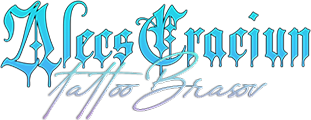Tattoos have been around for thousands of years, and they mean different things to different cultures. To some, tattoos are a form of self-expression, while to others they are a symbol of cultural identity. The history of tattoos is both fascinating and complex, spanning across centuries and continents. In this article, we%u2019ll delve into the origins of tattoos and how they%u2019ve evolved over time. From tribal tattoos in ancient times, to the rise of tattoo art in modern culture, we%u2019ll explore how tattoos have become a permanent part of the human experience. So, grab a seat and get ready to embark on a journey through time and culture as we explore the intriguing history of tattoos.
- The origins of tattoos
The history of tattoos can be traced back to ancient times. Archaeological discoveries have revealed that tattoos were a common practice in many different cultures around the world, such as Egypt, Greece, Rome, and Asia. In some cultures, tattoos were seen as a form of spiritual or religious expression. In others, they were used to mark social status, such as in the Polynesian culture, where tattoos were reserved for the highest-ranking members of society. In the olden days, tattoos were made with primitive tools such as sharpened sticks, bone needles, or even thorns. Many of these cultures believed that tattoos had healing powers and could help cure diseases. Tattoos were also used as a form of identification, especially among the ancient tribes. The practice of tattooing was brought to the West by sailors, who had encountered tattooed people during their travels. The first recorded instance of Western tattoos was in the 1700s when Captain Cook and his crew visited Polynesia. It wasn’t until the 1800s that tattoos became popular in the West, and they were initially associated with sailors, pirates, and criminals. Today, tattoos are widely accepted as an art form and a means of self-expression. The history of tattoos is a fascinating one, and it continues to evolve as new techniques and styles emerge.
- The cultural significance of tattoos throughout history
Tattoos have been a part of human culture for thousands of years. They have been used to signify various things throughout history, from religious and spiritual beliefs to social status and personal identity. In many cultures, tattoos were seen as a rite of passage, marking the transition from childhood to adulthood. In some cultures, tattoos were used to signify membership in a particular tribe or group. In ancient Egypt, tattoos were used to identify slaves and criminals. In Japan, tattoos have traditionally been used to signify membership in the Yakuza, or Japanese mafia. In Polynesian cultures, tattoos were used to tell a person’s life story, with each design representing a significant event or achievement. In many Native American cultures, tattoos were seen as a way to honor the spirits and connect with the natural world. The Maori people of New Zealand use tattoos to signify their ancestry and social status. In modern times, tattoos have become more mainstream and are often used to express personal identity or artistic expression. Today, tattoos can be found all over the world, with a variety of styles and designs. From traditional tribal designs to modern-day pop culture references, the cultural significance of tattoos has evolved and continues to thrive.
- The evolution of tattoo art
Over the centuries, the art of tattooing has evolved significantly. From the earliest known tattoos discovered on the 5,000-year-old “Iceman” to the intricate designs of modern-day tattoo artists, the history of tattooing is a fascinating journey through time. In ancient times, tattoos were used to signify status, religious beliefs, and as a form of protection against evil spirits. They were often simple designs created by pricking the skin with sharp objects and then rubbing in ink. As time went on, tattoo art became more elaborate, with tribal cultures using tattoos to tell stories, mark milestones, and represent spiritual beliefs. During the 18th and 19th centuries, tattoos were often associated with sailors and were seen as a way to prove one’s courage and bravery. As time went on, tattoos became more mainstream, and artists began experimenting with new techniques and styles. Today, tattoo art is more popular than ever, with millions of people sporting tattoos of all shapes and sizes. With advancements in technology and ink, tattoo artists are creating incredible works of art that are pushing the boundaries of what was once considered traditional tattooing. From simple designs to complex detail, tattoo art has come a long way from its humble beginnings.
- Conclusion.
In conclusion, tattoos have been a part of human history for thousands of years, and they continue to be a popular form of art and self-expression today. From ancient times to modern-day art, tattoos have held a variety of meanings and significance across different cultures and societies. While tattoos were once seen as a symbol of rebellion or deviance, they have increasingly become more widely accepted and even celebrated in many parts of the world. Whether you choose to get a tattoo for personal reasons, cultural traditions, or simply to appreciate the art form, it is important to remember the rich and fascinating history behind this form of body art. Regardless of where tattoos may go in the future, they will always be a testament to the human desire for beauty, creativity, and individuality.
